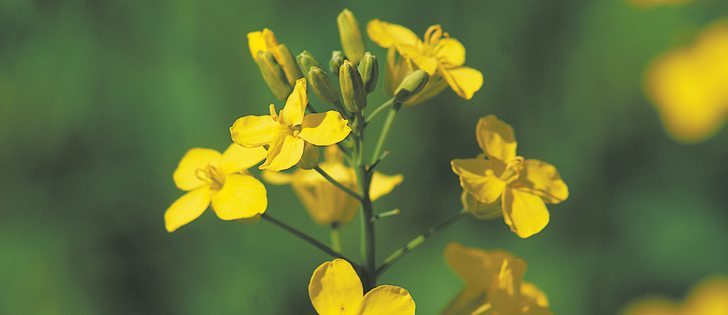The discovery of a canola protein that plays a major role in pollination could lead to higher-yielding crops and improved hybrid breeding programs.
Marcus Samuel, associate professor in the University of Calgary’s biological sciences department, said the discovery of glyoxalase (GLO1) could have far-reaching implications.
Forty-five percent of the flowers on a canola plant typically set seed.
“If we understand pollination, we can actually improve that percentage,” he said.
The GLO1 protein is such an important player in the pollination process that adding more of it could result in improved seed production.
Read Also

Farming Smarter receives financial boost from Alberta government for potato research
Farming Smarter near Lethbridge got a boost to its research equipment, thanks to the Alberta government’s increase in funding for research associations.
“If we got 60 percent of the flowers to set seeds, that would be an awesome advantage in the industry,” said Samuel.
One theory is that the levels of the GLO1 protein in the plant are reduced as flowers age. The flowers would set more seed if scientists could prevent that from happening.
“That would be a tremendous improvement in yield,” Samuel said.
It would be a way for farmers to increase canola production without adding more acres.
The pollination project has another two years of federal government funding before it runs out.
Samuel hopes farm groups will see the value in funding continued research into how the newly discovered molecular pathway can be exploited to improve canola yields.
The research also has implications for hybrid canola breeding programs.
Flowering plants are typically out-crossers that are incapable of accepting their own pollen, but canola is an exception. It has evolved to gain the ability to self-fertilize.
The characteristic creates problems for hybrid breeders who want canola plants that reject their own pollen but are open for cross-pollination because that is what boosts hybrid vigour.
Breeders use either labour intensive male sterility techniques or an enzyme that kills off all the antlers on the male plants to get rid of the pollen.
“What we are looking for is, is there a better way to do this?” said Samuel.
He believes the GLO1 protein could provide the answer. Turning off the protein shuts off all the things that are necessary for pollen to stick on the female tissues of the plant.
“When this protein is destroyed, pollination doesn’t happen,” he said.
Manipulating the protein could give hybrid canola breeders a non-genetically modified way to turn off canola’s ability to self-pollinate and self-fertilize.
“If we can do it without any transgenics, that would be better than what’s available out there right now,” said Samuel.
The canola pollination research, which was published in the Nature Plants journal, has not generated interest from seed technology companies because it is still uncertain how the protein can be used to boost yields and streamline the hybrid breeding process.
However, another one of Samuel’s canola research projects has attracted attention from the business community.
He discovered a gene regulatory network in arabidopsis, a close relative of canola, that prevents green seed damage caused by frost, which is the biggest downgrading factor in canola.
Samuele was able to transform a normal arabidopsis plant to over-express the de-greening factor and has recently used the same technique on canola.
“It is working beautifully. I’m pretty happy with that.”
The research attracted the attention of Siniazo Biotech from Ottawa.
“They’ve taken it up, and they’re talking to Monsanto and Bayer regarding this,” he said.
Samuel has also done drought tolerance work on Arabidopsis, which is ready to be transferred to canola.


















